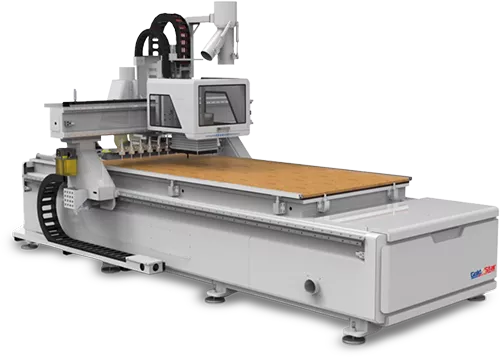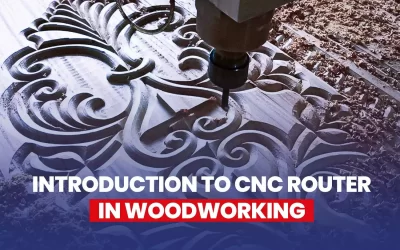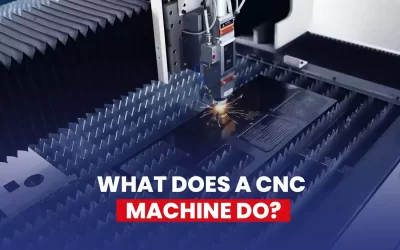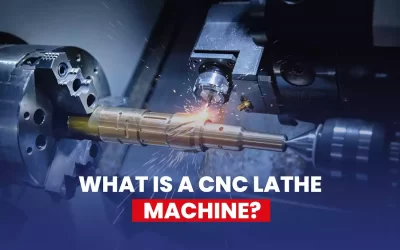GOLDSTARCNC MACHINES
EVERYTHING CNC RELATED
We are leaders in the supply of hight quality CNC machinary, offering a wide range of tools, spare parts, accesories and training programs to optimize your industrial processes.
Let us be your partner in the field of automated manufacturing!

MG Pro – 612
Syntec 60W – E Controller 9kw air cooler spindle 5 + 4 vertical drilling head. Delta 11 KW inverter 850W*2, 1.3KW * 2 servo motor Pantoscopic 30/25/25 Rails
Our latest CNC machines and tools designed for professional projects
-

Thunder CNC Router Machine
$45,000.00-
-

STAR PRO MAX 410 | 510 CNC Router Machine
-
-
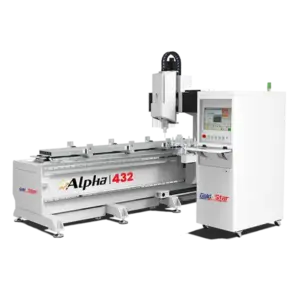
Alpha 432 CNC Router Machine
$39,897.00-
-
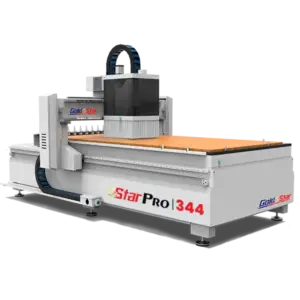
Star Pro 344 CNC Router Machine
Price range: $43,800.00 through $48,180.00-
-
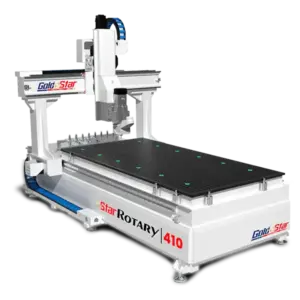
Star Rotary 410/510 CNC Router Machine
Price range: $65,219.00 through $70,543.00-
-
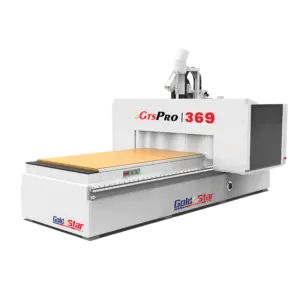
GTSPRO 369 CNC Router Machine
Price range: $103,455.00 through $119,548.00-
-
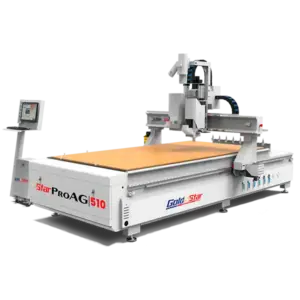
STAR PRO AG 48/510 CNC Router Machine
Price range: $51,788.00 through $57,662.00-
-
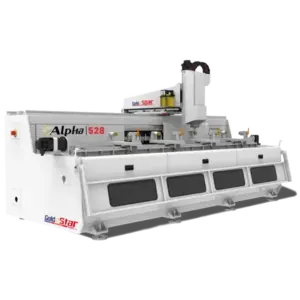
Alpha 528 Aluminum Profile Processing Machine
$39,050.00-
CNC Blog
On our site, you will find a wide variety of publications related to the world of industrial machinery. If you would like to learn more about their use, business or tips on how to take advantage of them, please visit our latest publications.
Introduction to CNC router in woodworking
Technology has changed a lot in recent years and has brought a great deal of advancement to the woodworking industry. One of these advances has been sold by the hand of CNC machines, in this case, we will talk about CNC Routers. What we used to do by hand and with a...
What does a CNC Machine do?
Computer Numerical Control machines (CNC) are devices that automate the manufacture of components or modify materials. They work by entering encoded instructions into a computer, allowing them to create parts with precision and speed. CNC machines play a vital role in...
What is a CNC lathe machine?
Currently, many companies use CNC machines to optimize their production processes. This allows them to create a greater number of parts and components with minimal margin of error, in an automated and large-scale fashion. In certain industries, some parts and products...
CNC Machinery FAQS
Does CNC stand for?
CNC stands for Computer Numerical Control. It refers to the automation of machine tools using computer programming to control their operation. CNC machines are commonly used in manufacturing processes to precisely cut, shape, and fabricate various materials.
What products are manufactured in CNC?
CNC technology is widely used in the manufacturing industry to produce a wide range of products. Some of the common products manufactured using CNC machines include:
1. Automotive Components: CNC machines are used to manufacture various automotive parts such as engine components, transmission parts, brake components, suspension parts, and interior components.
2. Aerospace Parts: CNC machining is extensively used in the aerospace industry to manufacture complex parts like turbine blades, engine components, aircraft structural components, and landing gear parts.
3. Electronic Components: CNC machinery is used to produce electronic components like printed circuit boards (PCBs), connectors, housings, and enclosures for electronic devices.
4. Medical Devices: CNC technology plays a crucial role in the manufacturing of medical devices such as orthopedic implants, surgical instruments, prosthetics, dental components, and diagnostic equipment.
5. Furniture and Woodworking: CNC machines are used to create intricate designs and shapes in furniture manufacturing, including cutting, carving, and engraving wooden pieces for cabinets, tables, chairs, and decorative items.
6. Jewelry: CNC machinery is employed in the jewelry industry to create precise and intricate designs on metals like gold, silver, and platinum. They are used for cutting, engraving, and shaping jewelry pieces.
7. Prototyping and Rapid Manufacturing: CNC machines are used to produce prototypes and small-scale production runs for various industries. They enable quick and accurate production of custom parts and products.
8. Consumer Electronics: CNC machines are utilized in the production of consumer electronic devices such as smartphones, laptops, tablets, and home appliances. They are used for precise machining of metal and plastic components.
9. Tooling and Molds: CNC machines are used to manufacture tooling and molds for various industries, including injection molding, die casting, and metal stamping. These tools and molds are critical for mass production processes.
10. Artistic and Decorative Items: CNC machines are utilized by artists and craftsmen to create intricate and detailed artistic and decorative items, such as sculptures, engravings, signage, and custom designs.
These are just a few examples of the wide range of products that can be manufactured using CNC technology. The versatility, precision, and efficiency of CNC machines make them essential tools in modern manufacturing processes.
Is CNC operating hard?
CNC machining may initially seem complex, but with proper training and experience, operating CNC machines becomes manageable. While it requires technical knowledge and programming skills, advancements in CNC technology have made the process more user-friendly.
To operate CNC machines effectively, individuals need to understand the basics of machine operation, tooling, material properties, and cutting parameters. They also need to have knowledge of CAD (Computer-Aided Design) and CAM (Computer-Aided Manufacturing) software to create and modify machining programs.
Training programs and courses are available to teach individuals how to operate CNC machines. These programs cover topics such as machine setup, programming, tool selection, machine maintenance, and safety protocols.
While there is a learning curve, once operators become familiar with the machine’s interface and programming language (such as G-code), they can efficiently set up the machine, load the necessary tools and materials, and execute the machining operations.
It is worth noting that complex or intricate machining operations may require more advanced knowledge and experience. However, with practice and continuous learning, individuals can become proficient CNC operators and maximize the capabilities of CNC machining technology.
What do CNC machinist do?
CNC machinists are skilled professionals who operate and maintain CNC (Computer Numerical Control) machines. Their primary role is to set up, program, and operate these machines to produce precise and accurate parts or components based on given specifications. Here are some key responsibilities of CNC machinists:
1. Machine Setup: CNC machinists are responsible for setting up the CNC machine, which involves installing and aligning the necessary tools, fixtures, and workpieces. They ensure that the machine is properly calibrated and ready for operation.
2. Programming: CNC machinists create or modify machining programs using CAD/CAM software. They input the required parameters, tool paths, and cutting instructions into the machine’s control system. Programming requires a good understanding of G-code or other programming languages specific to the CNC machine.
3. Operation: Once the machine is set up and programmed, CNC machinists operate the machine during the production process. They monitor the machining operation, make any necessary adjustments, and ensure the quality and accuracy of the produced parts.
4. Tooling and Material Selection: CNC machinists select the appropriate cutting tools, inserts, and tool holders based on the machining requirements and material properties. They also determine the optimal cutting speeds, feed rates, and tool paths to achieve the desired results.
5. Quality Control: CNC machinists perform regular inspections and measurements of the machined parts using precision measuring instruments. They ensure that the parts conform to the specified dimensions and tolerances, making any necessary adjustments to maintain quality standards.
6. Maintenance and Troubleshooting: CNC machinists conduct routine maintenance tasks on the CNC machine, such as cleaning, lubricating, and replacing worn-out parts. They also troubleshoot any issues or malfunctions that may arise during the machining process.
7. Safety and Compliance: CNC machinists adhere to safety protocols and guidelines to ensure a safe working environment. They follow safety procedures when operating the machine, handling tools, and working with materials.
CNC machinists play a crucial role in the manufacturing industry, as their expertise and precision are essential for producing high-quality machined parts. Their knowledge of CNC technology, programming, tooling, and quality control contribute to the efficient and accurate operation of CNC machines.
What is the CNC controller?
The CNC controller is the central component of a CNC machine that manages and controls its operation. It is responsible for interpreting the machining program, executing the commands, and controlling the movement of the machine’s axes and other functions. Here are some key aspects of the CNC controller:
1. Hardware: The CNC controller consists of hardware components such as a computer, control panel, input/output (I/O) devices, and motor drives. The computer processes the machining program and sends signals to the motor drives to control the movement of the machine’s axes. The control panel provides a user interface for operators to input commands and monitor the machine’s status.
2. Software: The CNC controller runs specialized software that interprets the machining program and converts it into machine-specific commands. This software may include CAD/CAM software for programming and generating tool paths, as well as the control software specific to the CNC machine.
3. Program Execution: The CNC controller reads the machining program, which is typically written in G-code or a similar programming language. It interprets the commands and sends signals to the motor drives to move the machine’s axes accordingly. It controls the speed, direction, and position of the axes, as well as other machine functions such as tool changes, coolant flow, and spindle rotation.
4. Feedback and Monitoring: The CNC controller receives feedback from sensors and encoders on the machine to monitor its position, speed, and other parameters. This feedback allows the controller to maintain accuracy and adjust the machine’s movements as necessary.
5. Operator Interface: The CNC controller provides an interface for the operator to interact with the machine. This can be through a control panel with buttons, switches, and a display screen. The operator can input commands, monitor the machine’s status, and make adjustments to the machining process as required.
Overall, the CNC controller is the brain of the CNC machine, responsible for executing the machining program, controlling the machine’s movements, and ensuring precise and accurate operation. It combines hardware and software components to enable efficient and automated machining processes.
What does CNC mean in woodworking?
In woodworking, CNC stands for Computer Numerical Control. CNC woodworking refers to the use of computer-controlled machines to automate and streamline various woodworking processes. These machines are equipped with cutting tools and are capable of performing precise and intricate cuts, carvings, and engravings on wood materials. Here are some key aspects of CNC woodworking:
1. Automation and Precision: CNC machines in woodworking eliminate the need for manual operation and rely on computer programming for precise and accurate cuts. The machines follow pre-programmed instructions to execute complex woodworking tasks with consistent precision.
2. Design and Programming: CNC woodworking involves the use of CAD/CAM software to create or import designs and generate machining programs. Woodworkers can create intricate designs on a computer, which are then translated into machine-readable instructions for the CNC machine to follow.
3. Cutting and Carving: CNC woodworking machines use various cutting tools, such as routers, spindle motors, or laser cutters, to cut, carve, and shape wood materials. They can create intricate patterns, curves, and contours that would be challenging to achieve manually.
4. Efficiency and Reproducibility: CNC woodworking machines can produce multiple identical pieces quickly and efficiently. Once a design and machining program are set up, the machine can repeat the process with consistent accuracy, enabling efficient batch production.
5. Versatility: CNC woodworking machines can perform a wide range of woodworking tasks, including cutting, carving, engraving, drilling, and shaping. They can work with different types of wood materials, including solid wood, plywood, MDF (medium-density fiberboard), and more.
6. Customization and Personalization: CNC woodworking allows for customization and personalization of wood products. Woodworkers can easily modify designs and adapt them to specific requirements, enabling the creation of unique and customized pieces.
7. Time and Labor Savings: CNC woodworking machines automate many labor-intensive tasks, reducing the time and effort required for complex woodworking operations. This enables woodworkers to focus on design, finishing, and other creative aspects of their work.
CNC woodworking has revolutionized the woodworking industry, offering increased efficiency, precision, and versatility in creating high-quality wood products. It allows woodworkers to push the boundaries of design and craftsmanship while streamlining production processes.
Is CNC the same as lathe?
CNC (Computer Numerical Control) and lathe are not the same, although they are related concepts in the context of machining.
A lathe is a type of machine tool used in machining operations that rotates a workpiece on its axis while various cutting tools are applied to shape, cut, or drill the material. It is commonly used for turning, facing, threading, and other cylindrical or symmetrical operations. Traditional lathes are manually operated, where the operator controls the movements and feeds of the cutting tools.
On the other hand, CNC refers to the automation and control of machine tools through computer programming. A CNC lathe is a lathe that is equipped with a CNC controller, allowing for computerized control of the machine’s movements and operations. CNC lathes are capable of executing complex tool paths and performing precise cuts with minimal manual intervention.
In summary, a lathe is a type of machine tool used for shaping and cutting materials, while CNC refers to the computerized control and automation of machine tools, including lathes. CNC lathes combine the capabilities of a lathe with the advantages of programmable control, offering enhanced precision, efficiency, and versatility in machining operations.
Can a CNC replace a table saw?
While a CNC (Computer Numerical Control) machine can perform certain cutting operations, it cannot completely replace a table saw. Here are some points to consider:
1. Cutting Capabilities: A table saw is specifically designed for straight-line cuts, crosscuts, and rip cuts on various materials, including wood, plastic, and sometimes even metal. It excels at quickly and accurately cutting large panels or sheets. In contrast, a CNC machine is more versatile and can perform complex cuts, carvings, and engravings based on programmed instructions. However, it may not be as efficient or precise for basic straight cuts as a table saw.
2. Speed and Efficiency: A table saw is generally faster and more efficient for repetitive straight cuts. It allows for quick setup and adjustments, making it suitable for high-volume production or large-scale projects. A CNC machine, while capable of automation and batch production, may require more time for setup and programming, especially for simple straight cuts.
3. Cost and Complexity: Table saws are generally more affordable and accessible compared to CNC machines, which can be costly and require specialized knowledge of programming and operation. Additionally, CNC machines have a steeper learning curve and require more technical expertise to operate effectively.
4. Flexibility and Versatility: CNC machines provide greater flexibility and versatility in terms of design possibilities. They can create intricate shapes, curves, and patterns that may not be possible with a table saw alone. They also allow for customization and personalization of projects. However, for basic straight cuts and simple woodworking tasks, a table saw is often more than sufficient.
In summary, while a CNC machine can perform certain cutting operations, it cannot fully replace a table saw. Each tool has its own strengths and purposes in woodworking. A table saw is ideal for straight cuts and rip cuts, offering speed, efficiency, and affordability. A CNC machine, on the other hand, provides versatility, precision, and the ability to create complex designs. Depending on the specific woodworking needs, a combination of both tools may be the most effective approach.
What can you make with a CNC table?
A CNC table, also known as a CNC router table, is a versatile tool that can be used to create a wide range of projects and products. Here are some examples of what you can make with a CNC table:
1. Signage and Engravings: CNC tables are commonly used for creating signs, plaques, and engravings. They can carve intricate designs, logos, and text onto various materials such as wood, acrylic, plastic, and metal.
2. Furniture Components: CNC tables can produce precise and repeatable cuts for furniture components. They can create intricate joinery, decorative patterns, and complex shapes for pieces like tabletops, cabinet doors, chair backs, and decorative panels.
3. Decorative and Artistic Pieces: CNC tables can be used to create decorative and artistic pieces, such as wall art, sculptures, relief carvings, and decorative moldings. They can bring intricate designs to life in materials like wood, foam, or plastic.
4. Prototypes and Models: CNC tables are valuable for creating prototypes and models in various industries. They can accurately cut and shape materials to create prototypes for product development, architectural models, and visual representations for design evaluations.
5. Custom Woodworking Projects: CNC tables enable the creation of custom woodworking projects, including personalized signs, cutting boards, coasters, jewelry boxes, picture frames, and other unique items. They allow for customization and personalization with intricate designs and details.
6. 3D Carvings and Reliefs: CNC tables excel at creating 3D carvings and reliefs. They can carve intricate patterns, sculptures, and detailed reliefs on materials like wood, foam, and plastic.
7. Cabinetry and Joinery: CNC tables can produce precise cuts and joinery for cabinetry projects. They can create dadoes, rabbets, mortises, and other joinery cuts for cabinets, drawers, shelves, and other furniture pieces.
8. CNC Machining Operations: In addition to woodworking, CNC tables can be equipped with different cutting tools to perform machining operations on materials like aluminum, brass, and other metals. This allows for the creation of precision parts and components for various industries.

